
London City Farmhouse by Catrina Stewart
Faeces, electric eels and fruit would power conceptual communities designed by Bartlett School of Architecture graduate Catrina Stewart.
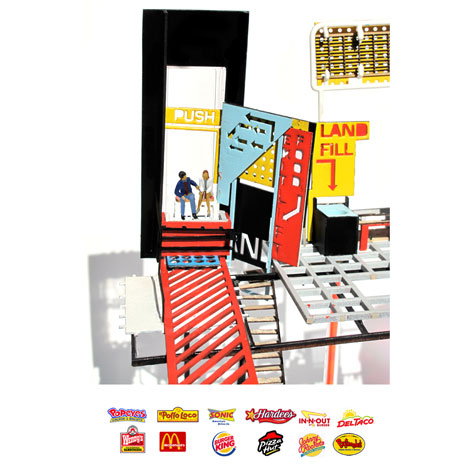
The City Farmhouse project proposes housing communities on stilts above clusters of public toilets, where visitors would be required to donate faeces and urine on arrival.
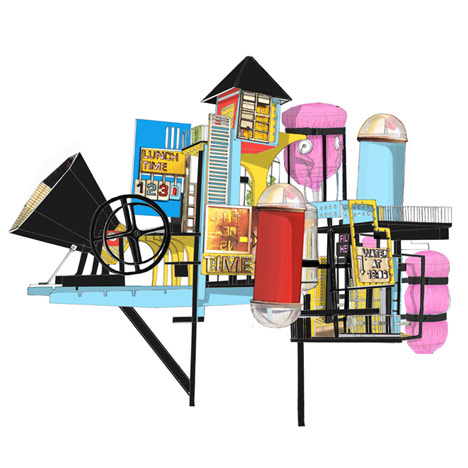
Electricity would be generated from methane gas released when the harvested excrement is broken down.
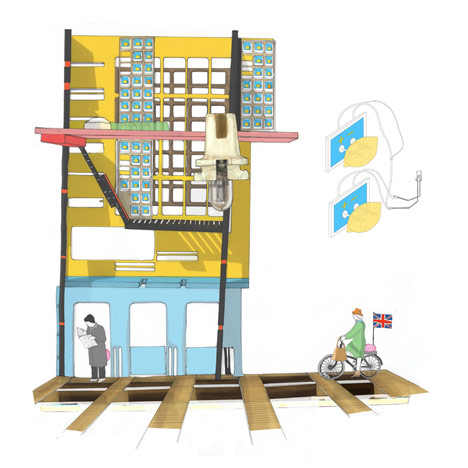
Faeces and urine could also be used to produce compost and water for community gardens.
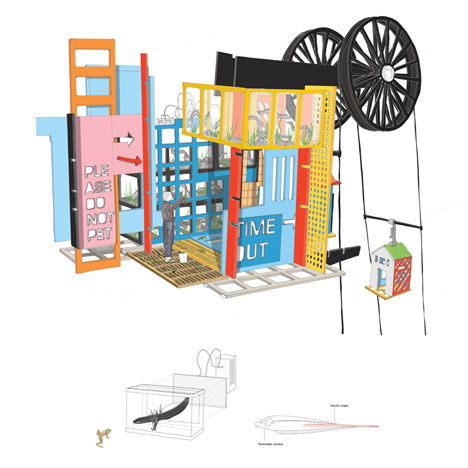
Streetlights would be powered by fruit acid and elevators would be powered by electric eels, kept as pets by residents.
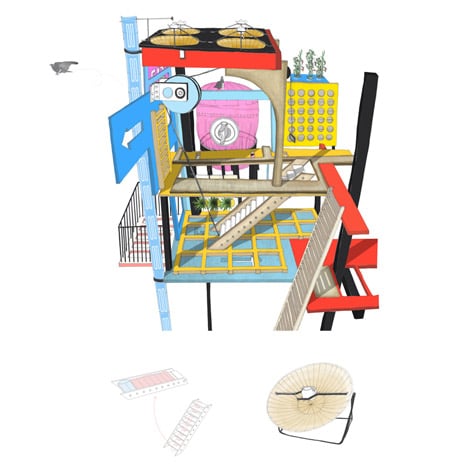
In 2009 Dutch designers Tjep designed a series of self-sufficient farms that reuse waste and could be scaled to accommodate a single inhabitant, a small community or an amusement park.
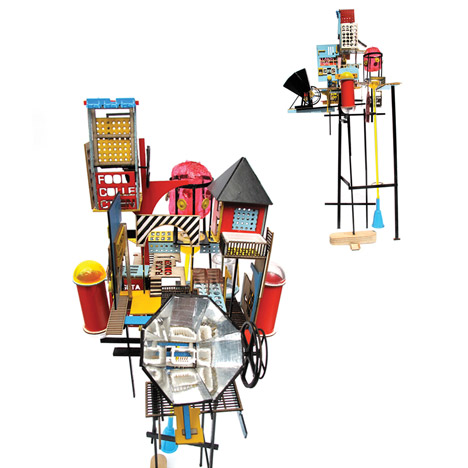
Other recent architecture graduate projects include an upside-down skyscraper and a tower that shoots artificial bees into the air - see all our stories about this years graduate shows here.
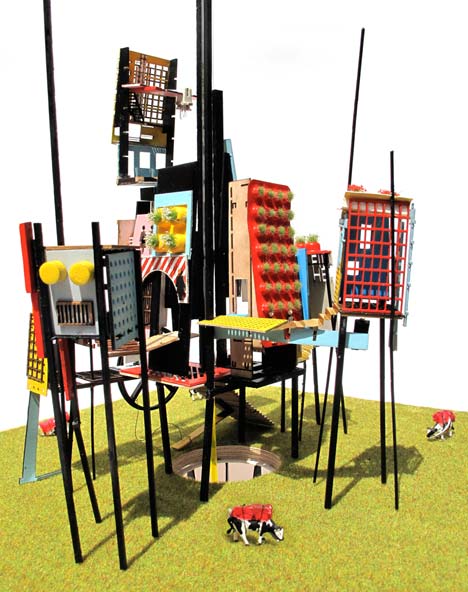
Here are some more details from Catrina Stewart:
London City Farmhouse
The City Farmhouse project is a prototype that looks at forming new self-sufficient communities, which integrate agriculture and housing within the city of London.
The Farmhouses and vertical colour gardens will be open to the public, and will rely on its colours and visitors to achieve self-sufficiency.
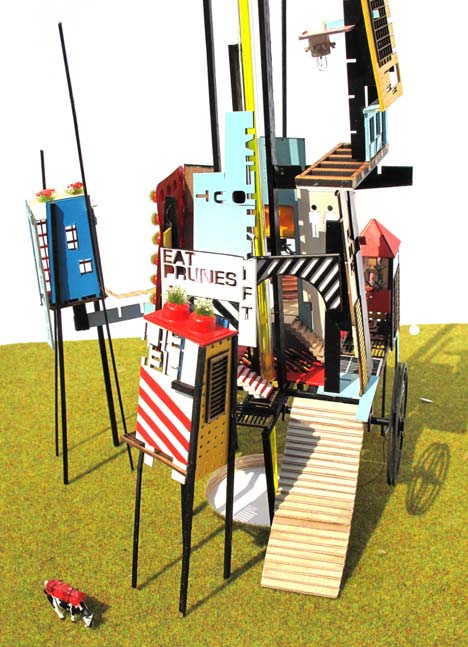
Visitors and residents will be expected to make a donation of faeces and urine when they visit the building. These will be used to produce water, compost and electricity for the Farmhouses. Methane gas released by the waste produced in biogas digesters can then be used directly or to produce electricity.
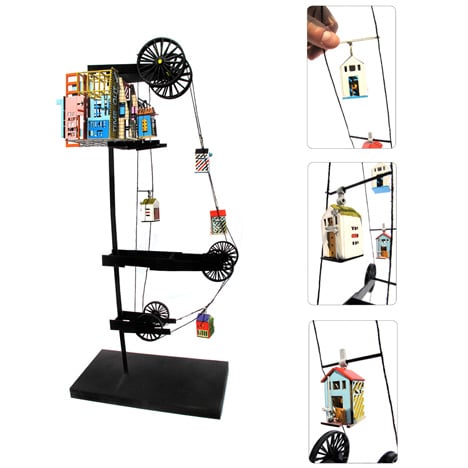
Without its public toilets the community would not be able to survive. The more visitors the building can attract the more power, food and water will be produced. New public toilets will be erected across the borough in order to collect human waste to power the Farmhouses. New communities will begin to grow around the more popular public toilets, creating new Farmhouses.
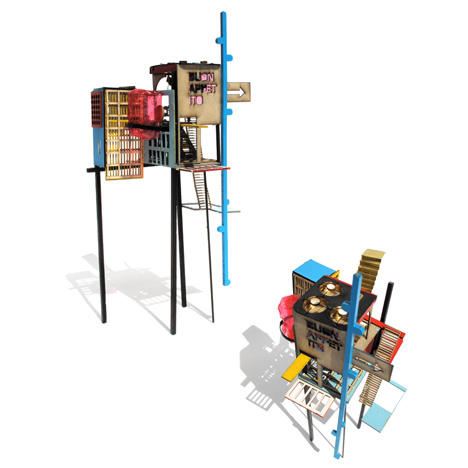
The Farmhouse project explores the use of colour to attract people to the building and entice them into using the public toilets by using the same principles used for colour in marketing and advertising. Colours are therefore used less for their aesthetics and more for their functional properties.
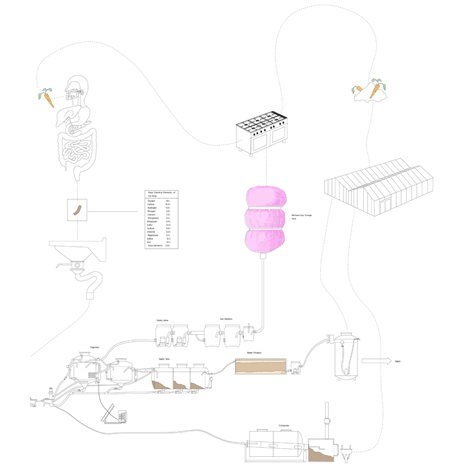
Nothing in the Farmhouse is disposed of, everything is recycled and reused to fuel something else. Old and new technologies are used to harness energy and food from almost anything, animals are no longer used for their meat but rather as a source of energy.
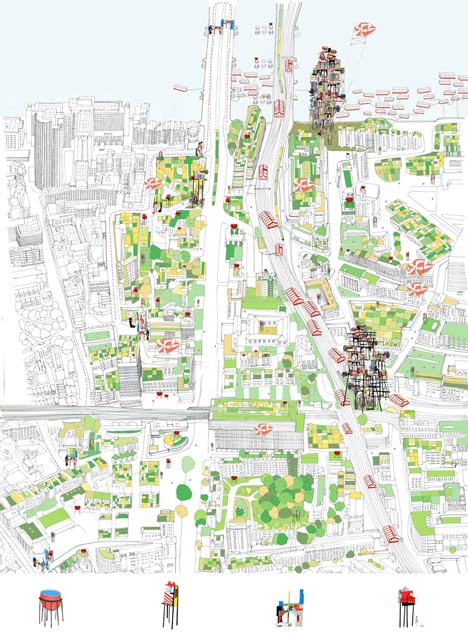
Cows are farmed for their methane gas, electric eels are kept as pets to power the elevators in the building and fruits are used to to power the street lights.